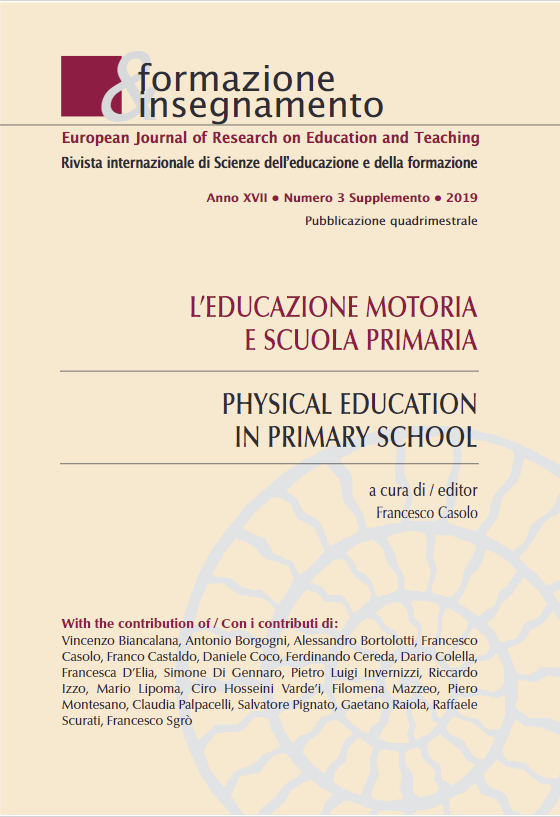Teaching and learning of motor competencies. Processes and Relations
DOI:
https://doi.org/10.7346/-feis-XVII-03-19_07Abstract
Teacher training in physical education requires not only the analysis of the areas of intervention, contents and organizational modalities, but also the knowledge of teaching methods to promote learning of motor competencies. The objective of the following contribution is to analyze the effects of teaching styles on the different ways of learning of the students. How do students learn motor competencies? The variation of teaching styles, in fact, determines different ways of processing information and responding to the student, thus encouraging different and personalized learning methods. Therefore, the teaching of motor competencies requires didactic intentionality and the proposal of motor activities and tasks oriented not only on the quantity but, above all, on the quality, enhancing the personal success and motivation of the students. Finally, the need to use different communication methods and teaching styles is supported, as the acquisition of motor skills and knowledge is supported by non-linearity, necessary to learn motor competencies effectively and meaningfully. Non-linear teaching and pedagogy, in fact, through the variability of motor tasks, the manipulation of space-time constraints, the use of feedback, more than a linear and predefined progression on how motor teaching and learning should take place, promotes in the students dynamic relationships between subject-environment-activity, executive variants and motor responses.
Downloads
Published
How to Cite
Issue
Section
License
Copyright (c) 2019 Pensa MultiMedia

This work is licensed under a Creative Commons Attribution 4.0 International License.
Formazione & insegnamento is distributed under Attribution 4.0 International (CC BY 4.0).
For further details, please refer to our Repository & Archiving Policy, as well as our Copyright & Licensing Terms.





